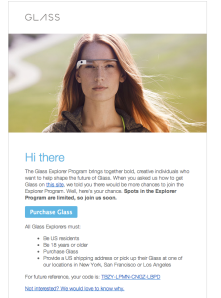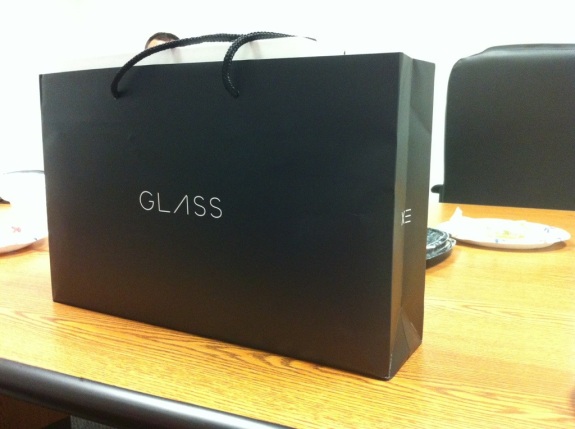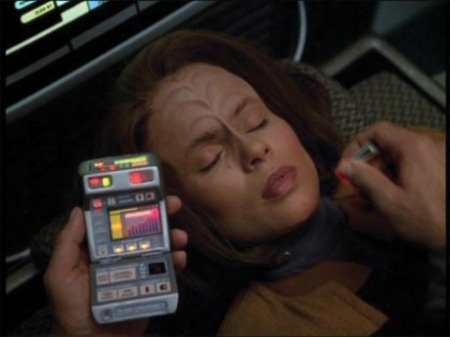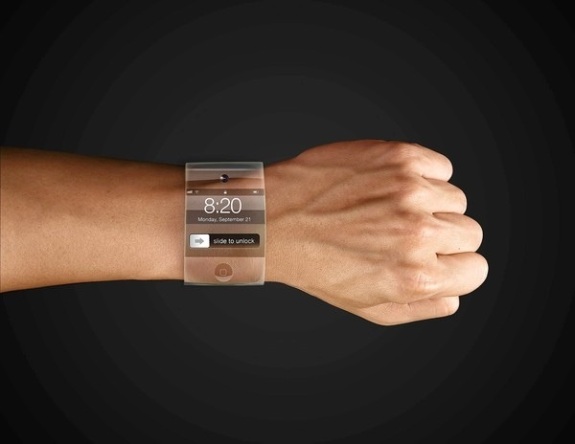Got the invite to Google Glass a few days ago. This is after signing up to the Explorer program about 6 months to a year ago. I’m not sure why they decided to suddenly open up the program to everyone. Prior to now, it was invite only, via current explorers. Those of you who signed up for Goole+ in the early days will remember that they did a similar staged rollout. Ostensibly this was to allow beta testing and refining of the final product, but I feel that there was a large marketing component as well: if you make your product scarce, it creates the perception of value and exclusivity. Certainly this has been the perception of Google Glass. It is US only, primarily used by people in Silicon Valley and New York City, and carries a hefty price tag that even some startups may balk at.
Investigating Google Glass further, you find that it really was spearheaded by Google’s marketing department in many ways. The woman who came up with the phrase, “Okay glass”, Amanda Rosenberg, was a marketing manager at the time. So I really think this is more of a PR, branding thing than an actual product.
Of course, it may still become a real product. I am not sure when that will happen. I have heard that it could be found on the market sometime this year.
I support most of what Google does. I’m an Android developer so I obviously like to see Android used in new ways; however, this seems to be more fluff than substance. Actually, Apple’s predicted iWatch sounds much more promising in terms of a wearable smart device for this year. It would seem to be more narrowly focused on health monitoring, similar to Nike’s fuel band.
Somehow Google has done a very good job at marketing, product promotion, packaging, PR, etc to the level of a new Apple iPhone rollout, but where is the final product?

















